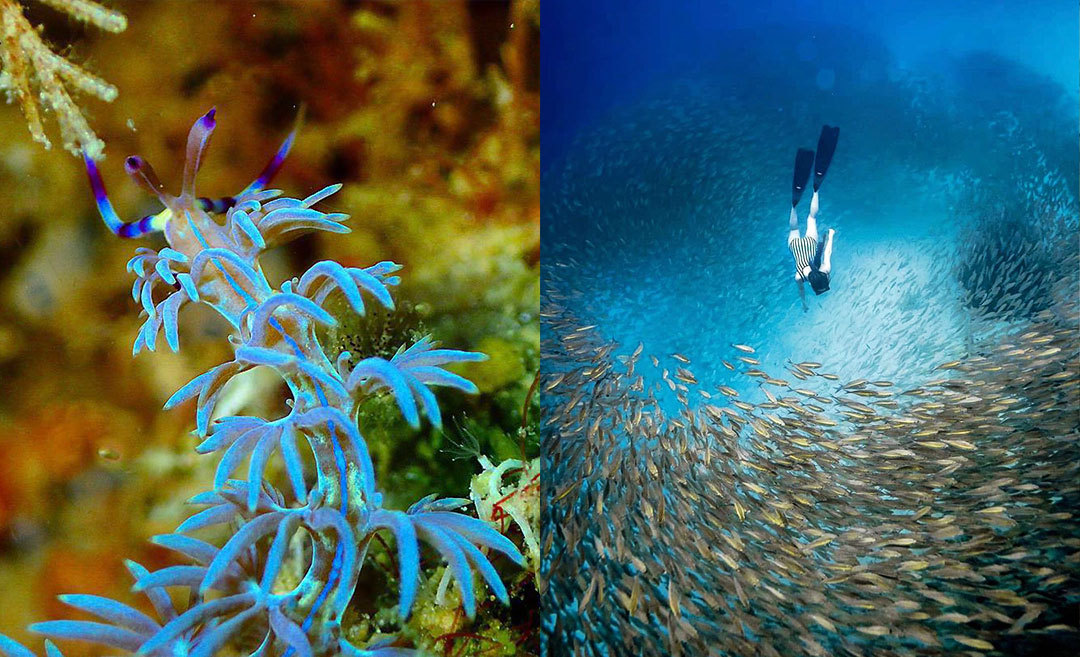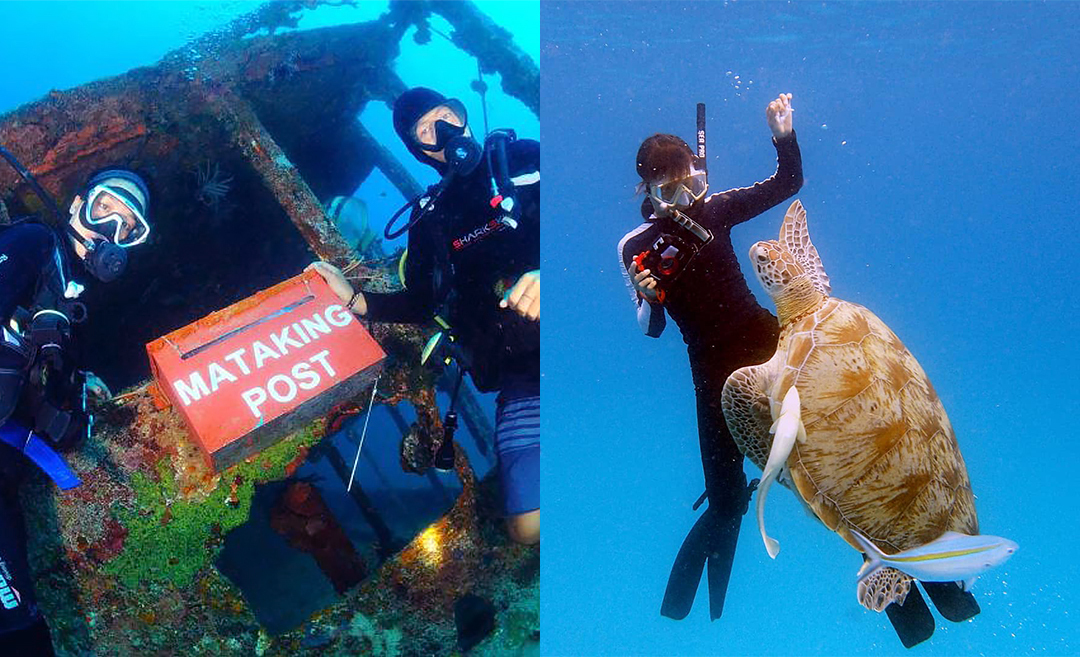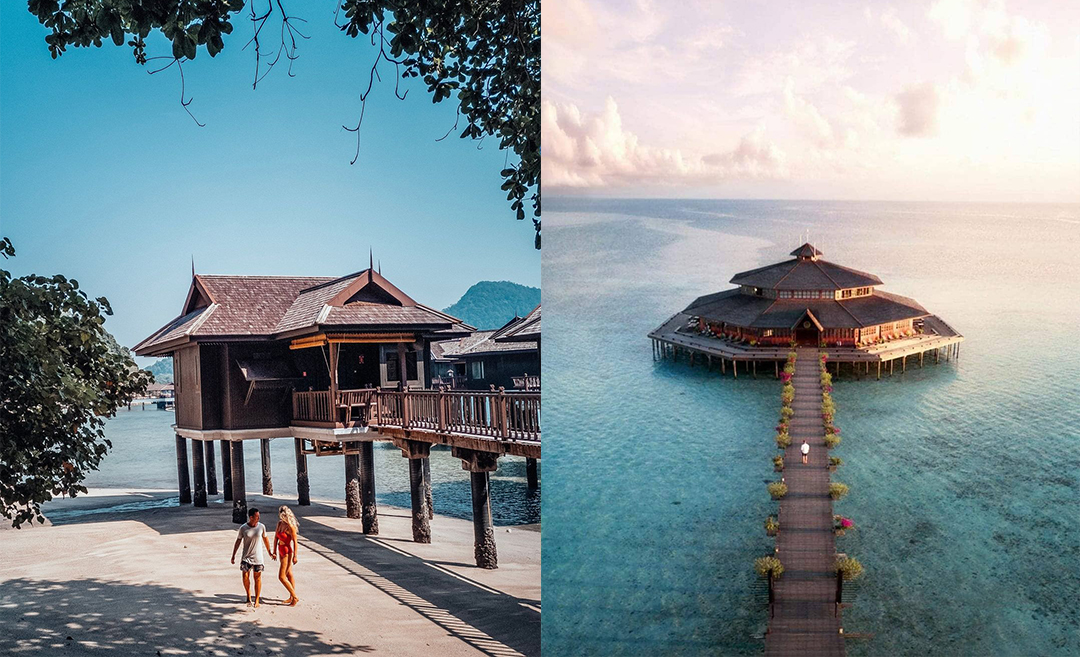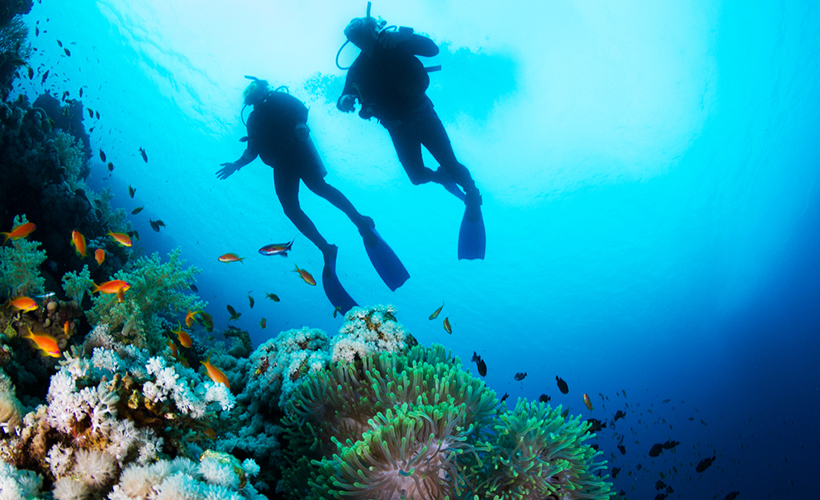Accommodating one of the most biologically diverse coral reefs in the world, with an estimated 550 coral species in East Malaysia and 480 in Peninsular Malaysia, Malaysia offers a multitude of stunning and intriguing dive sites. Faultless diving conditions, warm waters, and generally sunny conditions all year long make this Southeast Asian country a haven for novice and expert divers.
Redang Island
Located on the South China Sea and part of Terengganu’s Marine Park, many journey to the island for its many upscale resorts and spas, beachside restaurants, and island excursions. But the island’s most precious feature remains its coral reefs at offshore dive sites and ideal diving conditions.
Being one of the largest islands off the east coast of Peninsular Malaysia, the sea is rich in tropical fish and colourful reefs, providing a home to a great deal of macro life. The pinnacle of diving here is a chance to encounter several pelagic species, including tuna, reef sharks, barracudas, manta rays, and whale sharks.
Lang Tengah Island
Unreal beauty lies between the islands of Redang and Perhentian at Lang Tengah. This smaller, lesser-known island offers excellent diving opportunities. Book a dive with Lang Tengah Scuba Adventure and traverse the island’s diverse and colourful reefs offering encounters with resident schools of jacks, large shoals of snappers, rabbitfish shovel-nosed rays, and bamboo and leopard sharks.
Lang Tengah’s generally easy conditions make diving here suitable for beginners to seasoned divers. For the adventurous souls, book a night diving session at House Reef to meet the nocturnal reef animals and crustaceans. Look out for cuttlefish, translucent shrimps, catsharks, and more.
Tioman Island
Off the Malaysian East Coast, Tioman Island has a wide variety of coral reefs and dive sites that feature large boulder structures creating intricate mazes, swim-throughs, and wreckage. Salang Bay is a great spot on the island for muck diving. Much of the bay is made up of staghorn, plate, and brain corals, and provides refuge to various tomato clownfish, damselfish, and butterfly fish.
Other inhabitants that frequent the area are hawksbill turtles, humphead parrotfish, nudibranch, and moray eels; its shallow depth of two to 12 metres makes it an excellent training ground for underwater photographers.
Sibu Island, Johor
Part of the Sultan Iskandar Marine Park in Mersing, Sibu Island consists of several islands — Sibu Besar Island, Sibu Tengah Island, Sibu Kukus Island, and Sibu Hujung Island. There are four main beaches on the eastern side of Sibu. The Sea Gypsy Village & Dive Base is a PADI-affiliated dive centre where you can take a course with certified PADI instructors and explore the marine park.
With varying visibility up to 10 metres, depending on the weather, the island holds a wide range of soft coral fields to explore. Blue spotted ribbontail rays, moray eels, cuttlefish, and fish nurseries take up room in the coral gardens.
Mantanani Island, Sabah
Matanani Besar, Matanani Kecil, and Lungisan make up the Mantanani Islands off the northwest coast of Sabah. An hour by speedboat from Kota Belud, Mantanani used to boast its own resident dugong population up until the 1980s. Now, it is a rare and almost impossible sight, with less than 100 dugongs said to exist in the country. While they are a protected species in Malaysia, they are still in danger of being hunted for their meat.
A rare and uncommon encounter with a dugong these days can be life-changing. They are known to be friendly and hardly afraid of human beings, with many stories from locals and travellers alike. Crystal clear waters with visibility up to 15 to 40 metres makes exploring the vibrant coral reefs here a real treat. Nudibranch, mimic octopuses, marble electric rays, and green sea turtles are often spotted on dives.
For more information on Dugong and Seagrass Conservation, click here and here respectively.
Layang Layang, Sabah
Layang Layang, also known as ‘Swallow Reef’, is a remote atoll reef in the South China Sea, northwest of Kota Kinabalu, Sabah. The island itself is man-made, constructed for the Malaysian Navy before being developed into a dive spot welcoming divers from around the world.
Unlike other Malaysian islands, you won’t find tropical jungles, roads, or any mode of transportation here apart from a flight airstrip (the only way to the island) and its only dive resort, Layang Layang Island Resort.
Its isolated surroundings offer pristine diving conditions, allowing you to explore the reefs’ inhabitants, including manta rays, pygmy devil rays, and the scalloped hammerhead (hundreds strong, passing through between April and May for the mating season. There has also been the occasional and extremely rare orca and melon-headed whale sighting in recent years.
Kapalai Islands, Sabah
Kapalai, Sipadan, and Mabul form the golden triangle of dive spots in East Malaysia. The shallow reefs of Kapalai, just 15 kilometres off Sipadan, used to be a beautiful island over two centuries ago, but now remains as only a sandbar.
Still, it is known as one of the best macro dive sites in the country, and is a dream for any underwater photographer wishing to meet a cuttlefish, the otherworldly lavender frogfish, ribbon eels, and the ornate ghost pipefish.
Book a tour with Borneo Eco Tours here.
Manukan Island, Sabah
Manukan Island is the second largest island in the Tunku Abdul Rahman National Park and is the most frequented island by local and foreign tourists. Located in the East Malaysian state of Sabah, just off the coast of Kota Kinabalu, it is easily accessible by boat. Dive amongst the coral gardens, where you’ll find small reef fish, nudibranchs, seagrass, stingrays, and sea turtles.
Book a tour with Adventures In Borneo here.
South Point, Sipadan Island
South Point, the southern tip of Sipadan Island, is famous for its deep vertical wall of coral formations dropping up to 40 metres into the ocean’s depths. An abundance of sea life offers opportunities to dive among pelagics such as manta rays, barracudas, blue-ringed octopuses, and hammerhead sharks.
Gazetted as a marine protected area in 2009 and part of the Sipadan Island Park, it remains one of the best-preserved diving locations in the country and the world.
Wreck dives
A common diving attraction in the country includes exploring sunken World War II shipwrecks such as the Katori Maru and Hiyoshi Maru that lie off the coast of Kuching, Sarawak. These wrecks are now part of the productive reef system and draw plenty of marine life, giving plenty to see for the diver.
Sugar Wreck on the west of Perhentian Kecil is an excellent pick for advanced divers. A sunken freighter previously transporting sugar is now home to resident marine species. Bamboo sharks, snappers, crevalle jacks, and trevally fish are often found circling the wreckage.
Plenty of wreckage can be found on almost every other dive site in the nation, and each one holds a story. What they share in common now is that they are all part of healthy coral growth across the seabed.




